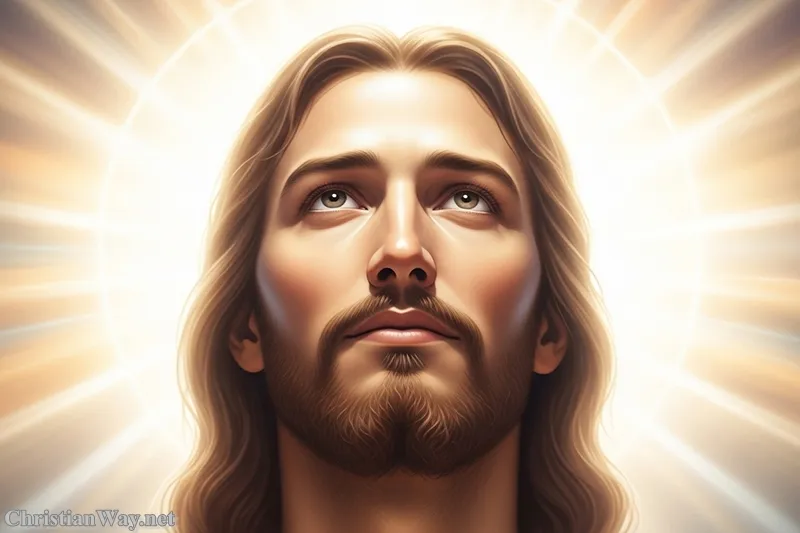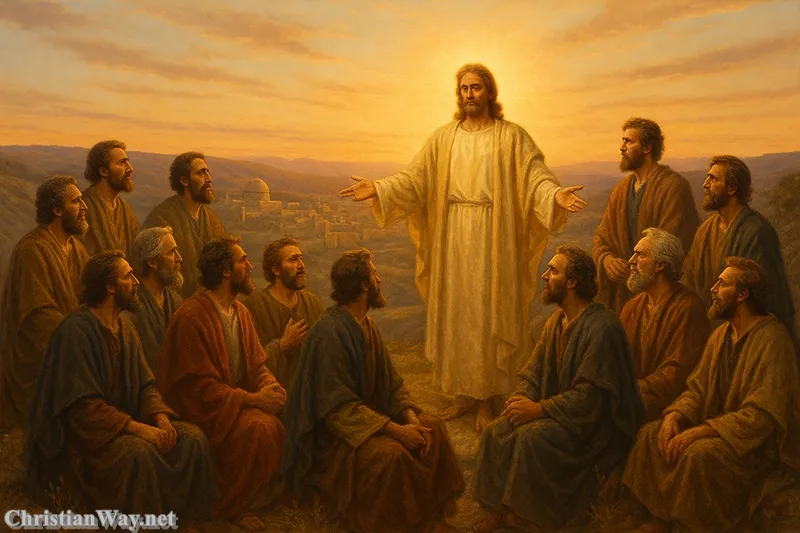Every human heart, at some point, is drawn to a face — a face that understands, that listens, that loves. The longing to be seen, truly seen, is one of the most profound desires of the human soul. And for the Christian heart, that longing finds its answer in one face alone — the Face of Christ.
Dear friends in Christ, to contemplate the Face of Christ is not merely to gaze upon an image or icon, but to encounter the living presence of God made visible in Jesus. In His eyes, we behold divine mercy; in His expression, perfect compassion; in His wounds, unfathomable love. The Face of Christ is the mirror of the Father’s heart — “He who has seen Me has seen the Father” (John 14:9).

From the manger to the cross, from the Mount of Transfiguration to the empty tomb, the Face of Christ shines as the light that breaks through our darkness. It is the same face that smiled upon children, wept for Jerusalem, and turned toward Peter with forgiveness after his denial. To look upon His face in faith is to be changed — to be healed, forgiven, and made whole.
The Mystery of the Incarnate Face
When the eternal Word took flesh, the invisible God took on a visible countenance. “The Word became flesh and dwelt among us” (John 1:14). In that sacred moment of the Incarnation, God gave Himself a human face — one that could be seen, touched, and kissed.
In Christ’s face, heaven and earth meet. It is a human face, marked by the dust of the road and the warmth of friendship; yet it is also the divine countenance that angels adore. The mystery of the Incarnation is not that God simply appeared in human form, but that He chose to bear our likeness so that we might share His glory.
Saint Paul writes, “For God…has shone in our hearts to give the light of the knowledge of the glory of God in the face of Jesus Christ” (2 Corinthians 4:6). Every time we turn our eyes toward Him — in prayer, in Scripture, in the Eucharist — that same light shines again within us.
The Compassion in His Eyes
“He looked at him and loved him.” – Mark 10:21
The Gospels are full of moments where the gaze of Christ changes lives. His look was never one of indifference; it was the gaze of love that sees beyond sin and shame. When Jesus looked at the rich young man, Scripture says simply, “He looked at him and loved him.” When Peter denied Him three times, the Lord turned and looked at Peter — and Peter went out and wept bitterly.
The eyes of Christ do not condemn; they invite repentance. They see not what we pretend to be, but who we are meant to become. The saints often spoke of this gaze as the very fire of divine mercy. Saint Thérèse of Lisieux said that the gaze of Jesus “penetrates the depths of the soul; it burns away all that is unworthy of His love.”
In a world where we often hide behind masks — of success, of strength, of distraction — the Face of Christ calls us to authenticity. It reminds us that we are loved not for what we do, but for who we are: beloved children of the Father.
The Face of Suffering and the Cross
“They shall look upon Him whom they have pierced.” – John 19:37
Nowhere is the mystery of the Face of Christ more moving than on Calvary. There, disfigured by suffering yet radiant with love, the Savior reveals the true nature of divine beauty — a beauty that redeems through sacrifice.
The prophet Isaiah foresaw it: “He had no form or majesty that we should look at Him… yet He was despised and rejected by men, a man of sorrows and acquainted with grief” (Isaiah 53:2–3). Yet in that suffering face — bruised, bloodied, crowned with thorns — we behold the mercy of God laid bare for our salvation.
The saints have long understood that to look upon the crucified Christ is to encounter a love stronger than death. Saint Francis of Assisi wept before the crucifix, crying, “Love is not loved.” For him, the disfigured Face of the Crucified was the most beautiful sight in the world, because it revealed how far love would go to redeem the beloved.
The Face of Glory and Resurrection
“His face shone like the sun.” – Matthew 17:2
From the sorrow of the Cross arises the light of Easter. The same Face once marred by pain now shines with eternal radiance. On the Mount of Transfiguration, Peter, James, and John caught a glimpse of this glory — the Face of Christ shining like the sun. After the Resurrection, that same light filled the hearts of those who encountered Him: Mary Magdalene in the garden, the disciples on the road to Emmaus, and Thomas who touched His wounds.
The risen Face of Christ is no longer bound by suffering but transfigures it. It teaches us that every tear will one day be wiped away, every wound healed in the light of His presence. To contemplate the resurrected Christ is to taste the joy of heaven itself — where “we shall see Him as He is” (1 John 3:2).
The Face of Christ in the Eucharist
In the Eucharist, the Church beholds the hidden Face of Christ under the humble appearances of bread and wine. Though unseen by our eyes, He is truly present — Body, Blood, Soul, and Divinity. Saint John Paul II called the Eucharist “the sacrament of the Face of Christ,” for there we meet Him most intimately, face to face in faith.
To adore the Blessed Sacrament is to rest one’s gaze upon the hidden Christ who gazes back with love. In that silent exchange, words fall away and only communion remains. The veil between heaven and earth grows thin, and the heart learns what it means to be seen, known, and loved completely.
The Face of Christ in Others
“As you did it to one of the least of these, you did it to Me.” – Matthew 25:40
To contemplate the Face of Christ also means to recognize Him in the faces of others — especially the poor, the sick, the lonely, and the forgotten. The more we gaze upon the Lord in prayer, the more we begin to see Him reflected in those around us.
The saints remind us that love of neighbor is inseparable from love of God. Saint Teresa of Calcutta often said, “Seek the face of Jesus in every human being.” When we feed the hungry, comfort the sorrowful, or forgive the wrongdoer, we are not only imitating Christ — we are encountering Him.
To see the Face of Christ in others is to live the Beatitudes: to be merciful, pure of heart, and peacemakers. It transforms the ordinary encounters of daily life into sacred moments of grace.
The Face of Christ in Art and Devotion
From the earliest centuries, Christians sought to depict the Face of Christ — not out of mere artistic impulse, but from a longing to make visible the invisible. Icons, paintings, and sculptures became windows to the divine, inviting prayer and contemplation.
The ancient image known as the Holy Face of Manoppello and the Veil of Veronica speak to this deep devotion: that the Face of Christ remains imprinted on the world, a sign of His abiding presence. In every sacred image, the artist tries not to invent but to reveal — to allow the viewer’s heart to meet the gaze of the Savior.
Yet no earthly image can capture the fullness of His beauty. The true icon is written not on canvas but on the human heart, where grace shapes us “into the image of His Son” (Romans 8:29). The more we become like Christ, the more His Face is revealed through ours.
The Eternal Face: Our Final Vision
“They shall see His face, and His name shall be on their foreheads.” – Revelation 22:4
The Christian journey is a pilgrimage toward the vision of God. Every prayer, every act of love, every moment of faith is a step toward that final encounter when we shall behold the Face of Christ in glory. This is the fulfillment of every longing, the answer to every prayer — to see Him as He is, and to be forever united with Him.
Heaven is not merely a place; it is a face-to-face communion with Love Himself. All the veils will fall away, and we shall be radiant with the same light that once shone on Tabor. “We shall be like Him,” says Saint John, “for we shall see Him as He is.”
Until that day, we walk by faith, sustained by the glimpses of His presence that grace affords — in Scripture, in the Eucharist, in the faces of those we love, and in the silent prayer of the heart.
Reflect and Pray
Dear brothers and sisters, the Face of Christ is the beginning and the end of all contemplation. It reveals who God is and who we are called to be. In moments of doubt, look to His eyes of mercy; in moments of sorrow, rest in His gaze of compassion; in moments of joy, reflect His light to others.
Let this be our simple prayer:
Lord Jesus Christ,
Let Your holy Face shine upon us.
Cleanse our hearts, heal our wounds, and renew our spirits.
May Your gaze of love transform us,
So that in seeing You, we may become like You,
And one day behold You in eternal glory.
Amen.
— Fr. John Matthew, for Christian Way





